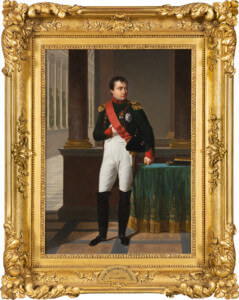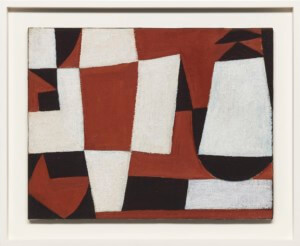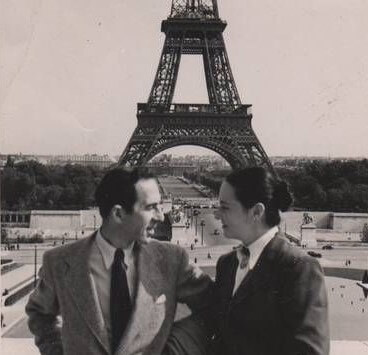To coincide with the start of this year’s TEFAF Online, will be taking a look at Painters in Paris, focusing on the impact of the City of Light as a source of inspiration. Our TEFAF highlights include Robert Lefevre’s The Emperor Napoleon (1814), Édouard Vuillard’s The Election Posters, Square Berlioz (Place Vintimille) (1924) and Carmen Herrera’s Castilla la Vieja [Venetian Red, White and Black] (1949), all of which draw on the environment of Paris in some respect, whether directly as a subject or indirectly as an artistically rich environment.


R. Lefevre, The Emperor Napoleon, 1814, oil on canvas
The 19th century is represented by Lefevre’s portrait of Napoleon, depicted the year of his fall from power and exile. A master of propaganda and a savvy user of media outlets, Napoleon has chosen to be painted in a Neoclassical colonnade filled with sculpted figures of monarchs and philosophers, a positioning that implicitly underscores his regal status. Lefevre, of course, was no less canny when it came to positioning himself for success: having found success at Napoleon’s Imperial court, he maintained his position in Paris after the Emperor’s exile by painting a well-received portrait of the newly restored King Louis XVIII. Within two years, Lefevre had been appointed First Painter to the King, after which he was charged with painting all official portraits of the Royal Family.


E. Vuillard, The Election Posters, Square Berlioz (Place Vintimille), 1924, glue-based distemper on cardboard
Paris itself is the subject of Vuillard’s 1924 cityscape The Election Posters, Square Berlioz (Place Vintimille). Vuillard began to experiment with painting street views shortly after he moved to the Paris district of Passy in October 1904, with the subject becoming more prevalent following his move to Place Vintimille in 1908. The choice of subject is somewhat unusual for a Nabis painter since these window views were clearly inspired by the Impressionist tradition made famous by Monet, Pissarro and Caillebotte. His apartment offered him a view of the central square, a hub of urban activity, and between 1909 and 1928 he painted over 60 versions of this motif, at different times of day and under varying conditions. There are various theories surrounding Vuillard’s interest in this particular motif, but a likely explanation is that the naturally shy and reclusive artist relished the anonymity of painting his fellow Parisians from the isolation of his balcony.


C. Herrera, Castilla la Vieja [Venetian Red, White and Black], 1949, acrylic on burlap
From the Post-War era Dickinson is featuring Castilla la Vieja [Venetian Red, White and Black] by Cuban-American artist Carmen Herrera, executed during the artist’s seminal years of study in Paris. ‘We went to Paris as soon as we could after the war,’ Herrera reminisces. ‘It was a very happy time in my life – I was young, I had a wonderful husband whom I loved….Paris at that time was like heaven.’ Arriving in June 1948, Herrera and her husband moved into a studio in Montparnasse and immersed themselves in the café culture of the Left Bank, circulating among artists (Arman, Serge Poliakoff, Jean Tinguely) and writers (Eugène Ionesco, Jean Genet). The Paris Salon championed a diverse roster of abstractionists, and Herrera encountered the legacy of the School of Paris in addition to an international field that inspired and encouraged her.
Whether as a source of patronage, of material, or of artistic community, Paris has long been of central importance to artists. With Dickinson’s virtual TEFAF stand Painters in Paris, the gallery will explore and celebrate the impact of Paris on individual artists as well as on larger artistic movements.
The three artworks are currently offered for sale by Dickinson. Click here to enquire.


